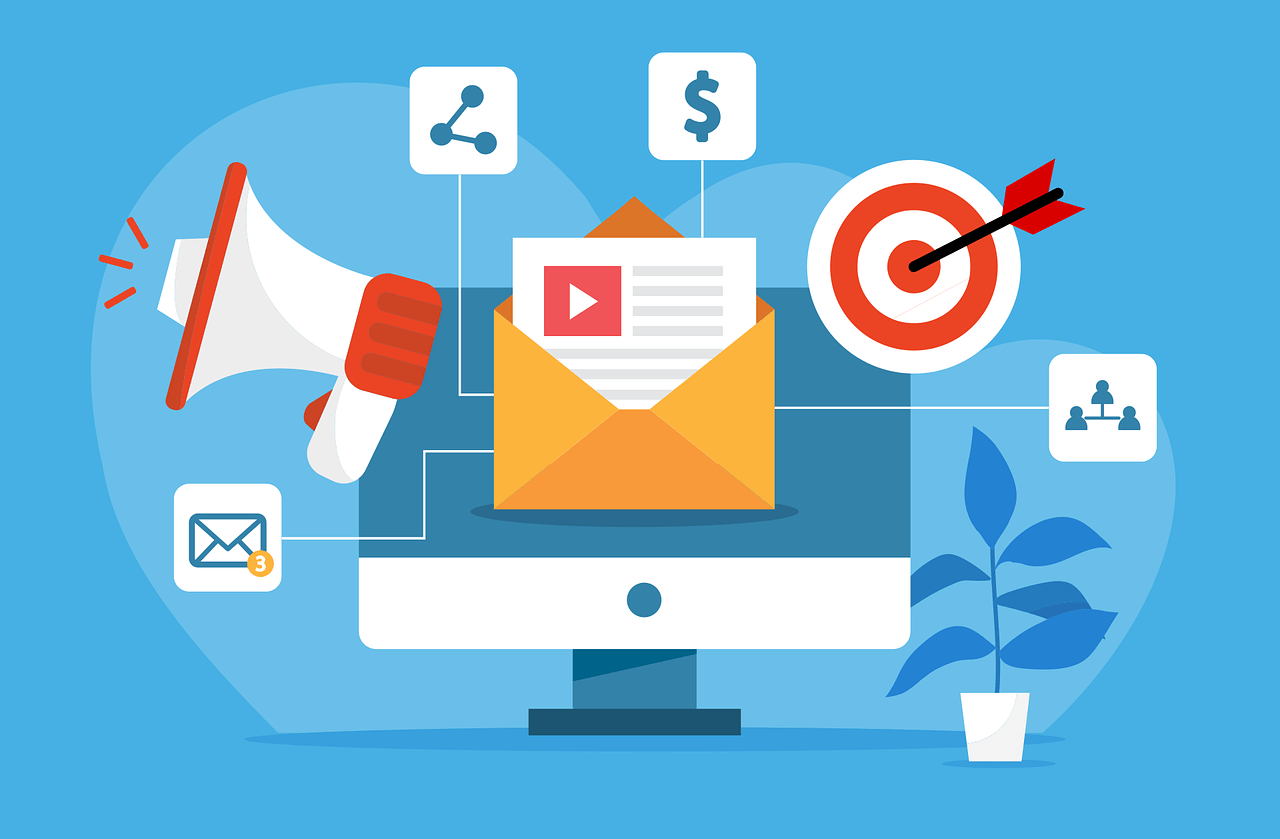Cold email outreach, once seen as a broadsword approach, now requires the precision of a scalpel to cut through the noise and reach the heart of potential customers. The difference between a cold email that’s welcomed and one that’s ignored often boils down to its level of personalization. This is where leveraging SEO insights to enhance cold email personalization comes into play.
Imagine sending an email that addresses not just what your business can offer, but how it can solve a problem the recipient is currently trying to solve. That’s the power of personalization powered by SEO insights. It transforms your cold email outreach from a generic broadcast into a relevant, engaging conversation starter.
So, in this article, you’ll learn how to increase the likelihood of your emails being opened and read and also significantly boosts the chances of fostering meaningful connections with potential clients.
Key Takeaways
- Personalization is crucial for cold email success, and using Senuto Visibility Analysis can help identify what potential clients are seeking, tailoring emails to their interests.
- SEO insights gathered from tools like Senuto’s Keyword Explorer enable crafting of compelling subject lines and content that resonate with recipients, increasing open and click-through rates.
- Timing and frequency of emails should be informed by audience behavior; starting with a weekly email and adjusting based on engagement can prevent overwhelming recipients.
- Monitoring KPIs such as open rates, CTR, response rates, and conversion rates is essential to gauge the effectiveness of cold email campaigns and make necessary adjustments.
- Feedback loops and A/B testing, informed by SEO trends and user engagement, allow for continuous optimization of cold email strategies for better performance and customer retention.
Understanding the Basics

Have you ever gotten an email from someone you didn’t know? That’s called a cold email. People send these emails to introduce themselves or their products using cold email tools to manage and optimize their efforts. It’s like saying “hello” to someone new, but through email.
In the world of digital marketing, utilizing a sending emails in large quantities for cold emailing is a popular way to reach out to perform link-building outreach or simply, reach new potential customers.But, it’s not always easy. Imagine trying to make a new friend at school, but they don’t know who you are. That’s the challenge with cold email campaigns.
Now, you might be wondering, “What does SEO have to do with emails?” SEO, or search engine optimization, helps people find what they’re looking for on search engines. By understanding what people search for, you can learn a lot about what they like or need. This is where SEO insights come into play. They tell you about the audience’s preferences and behaviors.
For example, if a lot of people search for “best outdoor games,” it means many are interested in playing outside. Using this information, if you’re trying to sell outdoor games using cold outreach, you can personalize your cold emails to talk about these games. This makes your email more interesting to the person receiving it and increase your click through rates.
Connecting SEO and email marketing might sound tricky, but it’s really about understanding people. By leveraging SEO insights, you can make your cold emails feel more personal.
Instead of just saying, “Buy this game,” your email can say, “Hey, we noticed you like outdoor activities. Check out our cool new game that’s perfect for your next adventure!” This approach shows you care about what they’re interested in, making them more likely to read your email.
In simple terms, think of SEO insights as clues. These clues help you understand what your potential email friends (a.k.a. customers) are interested in. By using these clues, you can talk about things they like, making your cold emails much more effective. It’s like knowing that your new school friend loves comic books, so you start the conversation by talking about your favorite comic. This makes your friend more interested in chatting with you. The same goes for cold emails. By personalizing them with information that your audience cares about, you’re more likely to get a positive response.
So, remember, cold emailing is your first step in saying “hello” to someone new. And with SEO insights, you can make sure your “hello” in cold outreach is loud, clear, and interesting, making your new email friends want to say “hello” back.
Strategizing Cold Email Outreach with SEO Insights
When you’re trying to make new friends, you want to show them you really get them, right? You’d talk about things they like or stuff you both have in common. This is what we do when we use SEO insights to help with cold email and outreach efforts. It’s about sending emails that people actually want to read because they speak directly to what they’re interested in. Leveraging CRM with email integration tools helps ensure that every email is crafted with personalization and precision, enhancing your outreach efforts.
Analyzing SEO Data for Audience Insights

First things first, you need to figure out who you’re sending your emails to. This is called your target audience. SEO can help you understand this audience better. For example, if you’re selling books, SEO data can show you what kinds of books people are searching for. Are they looking for adventure stories or maybe cookbooks? This helps you divide your audience into groups based on their interests. On the other hand, link building efforts require a different mode of thinking entirely.
To do this, you can use tools like Google Analytics or keyword research tools. These tools tell you what keywords people use when they’re searching online. Knowing these keywords helps you understand what your audience really wants. Additionally, establishing an effective email cadence based on this SEO data ensures that your messages reach recipients at optimal times, enhancing engagement and response rates.
Crafting Personalized Subject Lines
Did you know the subject line is like the title of a book? It’s the first thing people see, and it can make them decide if they want to “open the book” or not. By using what we learn from SEO, we can make subject lines that catch people’s attention. For instance, if we know our audience loves DIY crafts, a subject line like “Unlock Your Next DIY Project with These Tips!” can get them excited to open the email.
Subject lines that speak directly to what people are interested in are like magic keys that open doors. They make people feel like you’re talking right to them, which makes them want to read more.
Tailoring Content Based on SEO Findings
Once you’ve got your audience’s attention with a great subject line, the next step is to make sure the email itself is interesting to them. This is where you get really personal. If your SEO research shows that a part of your audience loves outdoor activities, your email to them should talk about products or services related to the outdoors.
You can also use SEO trends to guess what your audience might be interested in next. For instance, if you notice more and more searches for eco-friendly outdoor gear, you can mention your range of eco-friendly products in your emails. This shows you’re not just trying to sell something; you’re paying attention to what they care about. Using prospecting tools, you can further refine your target list, ensuring that your cold emails are not only well-received but also effectively help in maintaining customer loyalty by keeping your brand relevant and engaging.Learn more about strategies for keeping customers engaged.
Executing Enhanced Cold Email Campaigns

Sending cold emails can feel like trying to hit a bullseye in the dark. But with SEO insights lighting the way, you can aim your emails with precision and confidence. Let’s explore how efficiently you can execute cold email campaigns with cold emailing software to reach your targeted audience at scale.
Integrating SEO Insights into Email Templates
Creating cold email templates is like drawing up a map for treasure hunting. You know there’s gold out there; you just need the right path to find it. By using SEO-driven content in your templates, you make sure every email points directly to what your audience cares about.
For instance, if SEO data shows that “sustainable living” is trending, include that topic in your templates. This way, when you customize each email, you can highlight products or tips related to sustainable living, making each message feel personal and relevant.
However, there’s a fine line between personalization and automation. Imagine getting a birthday card that just says “Happy Birthday, [Your Name Here].” It feels impersonal, right? The same goes for cold emails. You want to use templates that allow you to add personal touches, like mentioning a recent blog post they might have read or a product they looked at. This shows you’re paying attention, not just sending out mass emails.
Timing and Frequency
Knowing when to send your emails can be just as important as what you say in them. SEO insights can help you understand when your audience is most likely to be online.
For example, if your target audience is made up of busy professionals, sending emails early in the morning or late in the afternoon might catch them when they’re checking their inbox.
As for how often to send emails, think about how you feel when you get lots of emails from the same person. You don’t want to annoy your audience or make them feel overwhelmed. Instead, you want to stay on their radar without becoming a nuisance.
A good rule of thumb is to start with once a week and adjust based on how they respond. If they engage with your emails, you can follow up and experiment with increasing the frequency slightly. But always keep an eye on their reactions.
Measuring Success and Optimizing Campaigns
After you’ve launched your cold email campaigns, using SEO insights to personalize them, the next step is seeing how well they’re doing. It’s like after you plant seeds in a garden, you need to check which ones are growing well and which ones aren’t. This helps you understand what works best for your audience.
Key Performance Indicators (KPIs)
To measure the success of your personalized cold emails, you’ll need to focus on certain key performance indicators (KPIs). Think of KPIs as clues that tell you how your own cold email campaign is performing. Some important clues to look for include:
- Open rates: This tells you how many people are opening your emails. If your subject lines are catchy and relevant, more people will open your emails.
- Click-through rates (CTR): This measures how many people clicked on a link in your email. It shows if your email content is engaging enough to make readers want to learn more.
- Response rates: This is about how many people replied to your email. A high response rate means your message resonates well with your audience.
- Conversion rates: This tells you how many people took the action you wanted them to take, like signing up for a trial or making a purchase.
Monitoring these key performance indicators helps you determine if your emails are effective. If they’re falling short, you may need to adjust your strategy.Discover more about essential metrics for marketing success.
Imagine you’re trying two different flavors of ice cream to see which one you like more. A/B testing is kind of like that, but with your emails. You send out two versions of your email, each with one small difference, to see which one performs better. Maybe one email has a different subject line or a different call to action. By comparing how each version performs, you can learn what your audience prefers.
Leveraging Feedback Loops
Feedback is super important. Every time someone interacts with your email, it’s like they’re telling you what they like or don’t like. Paying attention to these signals lets you fine-tune your emails over time. For instance, if you notice that emails about a certain topic get more opens, you can focus more on that topic in future emails.
Using SEO insights can help you keep improving your emails. SEO tells you what people are interested in right now. By staying up-to-date with these trends, you can make sure your emails always have content that your audience cares about.
Wrapping Up
As we wrap up, remember that the digital landscape is ever-changing. Search trends evolve, and so do the ways people interact with their emails. The key to continued success lies in your ability to adapt and refine your strategies.
Keep a close eye on your campaign outreach strategy’s performance metrics, embrace A/B testing to discover what works best, and always be ready to pivot based on the latest SEO insights and email engagement trends.
Your cold email outreach can be more than just a way to pitch your products or services. Done right, with a deep understanding of your audience’s needs and interests, it can be a powerful tool to establish genuine connections, offer value, and ultimately, drive your business forward.
So, take these insights and strategies to heart. Experiment, optimize, and personalize. The world of email marketing is rich with opportunities for those willing to put in the work to understand their audience deeply.
Your next cold email, powered by SEO insights and a keen eye for personalization, could be the one that turns a prospect into a loyal customer.
 Jeremy Chatelaine
Jeremy Chatelaine